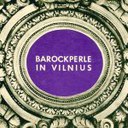0212 “Vilnius. A Baroque City”: Changing Perceptions of Baroque Heritage during the Twentieth Century
Identifiers (Article)
Identifiers (Files)
Abstract
Vilnius presents itself today as the easternmost and northernmost European city of the Baroque, and the Baroque heritage played an important role in 1994 when the historic centre of Vilnius was inscribed on the UNESCO World Heritage List. Throughout the twentieth century, the Vilnius Baroque attracted the attention of artists and scholars. However, the approaches to research into this field differed both in terms of methodology and in relation to their political aims. The lively intellectual debate on Vilnius’ Baroque art and architecture that went on in the inter-war period was followed by a time of rather vague and unproductive research during the Soviet period, and it flourished again after the restoration of Lithuanian independence in 1990. The first part of this article gives an overview of the main debates on and interpretive models of Baroque architecture in Vilnius before the Soviet occupation. The second part explores the Soviet reinterpretation of Baroque art and architecture and the various techniques that were used to create new values of this heritage for the then new Socialist society of Lithuania.
Statistics


License

This work is licensed under a Creative Commons Attribution-NonCommercial-NoDerivatives 4.0 International License.



